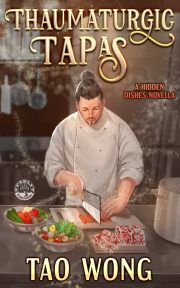“And What’s So Fantastic About It?!”: How To Write Fantastic Noir
by May Haddad
Fantastic noir is a subgenre that blends film noir or its literary inspiration and counterpart, hardboiled fiction and roman noir (respectively), with the more outlandish elements of speculative fiction. It crops up here and there in films like Chip ‘n Dale: Rescue Rangers and Pokémon Detective Pikachu or novels like Jonathan Lethem’s Gun, with Occasional Music and Douglas Adams’ Dirk Gently series, but it’s nowhere near as popular as its sister genres like tech-noir. That’s because whenever new fantastic noir is released, it seems to fall into the same trappings that have prevented the genre from being as embraced by the SFF community as it could be.
In order to avoid them, the following rules should be kept in mind when writing your own fantastic noir:
#1 The Need For An Internal Logic
No matter how outlandish the speculative fiction elements that are introduced are, hardboiled fiction needs to make sense if you want to keep the audience invested in the plot. Even with all the zaniness of Who Framed Roger Rabbit? the world and its rules were established early on and make sense within the context. Nowhere are they broken for a cheap laugh or shortcut, which allows the drama and horror elements to be as impactful as the writers intended.
#2 – The Aesthetic Need To Mesh
You can make just about any combination work, but that’s the catch, you need to make them work. Being a live-action/animated film hybrid that mixes adult black comedy, fantasy, horror, and film noir, Ralph Bakshi’s Cool World had an interesting premise that, in theory, could’ve resulted in a fantastic film but the execution fails to rein in the disparate elements into a cohesive whole and ends up a jumbled tonal mess.
#3 – The Speculative and Hardboiled Elements Shouldn’t Drown Out Each Other
Both should be meaningfully included. Of course, there’s a risk that the hardboiled elements overwhelm the colorful elements, but it’s far more common to see the inverse. The Anita Blake novels infamously suffered from this as the series progressed, with the crime and mystery elements that had drawn in certain readers receiving less and less focus than the supernatural and erotic elements of the series. More often, however, the noir and hardboiled plotting is done away with as the story reaches its climax, and the protagonists essentially become action heroes fighting off the antagonists with the MacGuffin or escalating power levels as is often the case with fantastic noir that feature superheroes such as Hellboy or Batman. In order to establish a balance in this regard, it helps to rein in the scope of the story and the speculative elements, especially if the protagonists and antagonists possess supernatural abilities, in order to keep things grounded.
#4 – Think Outside The Box When it Comes to the Noir and Hardboiled Elements
So many fantastic noirs founder because they fail to capitalize on the speculative premise. Take that away, and you’re left with a standard noir or hardboiled plot. This is particularly apparent in the Blacksad graphic novels from France, where the fact that it’s set in an anthropomorphic rendition of 1950s America doesn’t impact the plot in any significant way, and we’re essentially being presented with furrier classic film noir plots. The outlandish elements need to be factored into the story in a meaningful way, or else you’ll end up with a by-the-numbers plot with speculative salad dressing.
#5- The Backstory Needs To Be Thought Out
In order for a reader or watcher to buy into an outlandish premise, they need to be sold on the characters and the world. Grim Fandango, for example, follows Manuel “Manny” Calavera, a travel agent with the Department of Death, who was once the best in the business, but now has fallen on hard times. As a travel agent, his job is to escort souls to the Land of the Dead and provide them with transportation to the Ninth Underworld. Even though this premise is outlandish, from it, it’s clear that the adventure game has a developed protagonist and an intricate mythology that gets you invested in the story before you’ve even heard the plot.
#6- Not All Fantastic Noir Stories Need to Star a Detective Solving a Mystery
Noir and hardboiled fiction is popularly thought to star chain-smoking P.I.s led by femme fatales into solving mysteries, whose answers imply corruption at the highest levels. This is the reason why fantastic noirs seem to be just that with analogs drawn from the outlandish elements. But these genres can be so much more than that because what defines noir and hardboiled fiction does not necessitate the standard tropes that have preoccupied popular conceptions of them. Eric Powell’s The Goon is marketed as a comic series starring a muscle-bound former circus assistant, who pretends to be the top enforcer of a secretive mafioso, and what follows is a crime epic of pitch-black humor, tragedy, and the utterly grotesque in an all-out gang war for the control of a city with a nameless zombie priest directing zombie hordes from his citadel. This is all so fantastic while still firmly fitting into the noir and hardboiled mold.
 May Haddad is a writer who has a hard time admitting she’s a writer. Her work has been featured in The Markaz and Nightmare Magazine. You can find her on Twitter @MayHaddadWrites — if she can find the time to post.
May Haddad is a writer who has a hard time admitting she’s a writer. Her work has been featured in The Markaz and Nightmare Magazine. You can find her on Twitter @MayHaddadWrites — if she can find the time to post.


